Born To Win: Is the Kris Bryant story too good to be true? No, but the Cubs will take it

This story appears in the March 27, 2017 issue of SPORTS ILLUSTRATED. Subscribe to the magazine by clicking here.
Everything you are about to read is true, though at times it may sound too good to be so.
It is true that Kris Bryant was the 2013 College Player of the Year, the 2014 Minor League Player of the Year, the 2015 National League Rookie of the Year and, while playing third base for the first world championship Chicago Cubs team in 108 years, the 2016 NL Most Valuable Player.
It is also true that two months after he secured the last out to clinch the Holy Grail of sports championships, Bryant, 25, married his high school sweetheart, a girl he met in freshman English class.
It is true that he earned all A’s in elementary, middle and high schools with the exception of one B—the result of an 89 average in high school precalculus. Such smarts earned Bryant the No. 2 academic ranking in his graduating class, which carried the honor of speaking at graduation as the salutatorian. Bryant instead yielded that honor to a classmate with a similar GPA, because he wanted her to have the recognition.
It is true that the 6'5'', blue-eyed Bryant is so handsome that he is the rare baseball player to be an out-of-uniform spokesperson. (Clothing retailer Express hired him as a model.)
True, too, is that Bryant does not smoke, drink or use profanity. The Cubs have been known to toast victories in their postgame “party room” at Wrigley Field with shots of whiskey. A clubhouse attendant fills Bryant’s shot glass with apple juice. “Guys,” Bryant told his teammates midway through last season, “let’s win the World Series. And when we do, I’ll have my first sip of alcohol.”
Says Bryant’s wife, Jess, “Then it became the running joke in the clubhouse: ‘We have to win just for Kris!’”
About an hour after Chicago won Game 7 of the World Series, with most of the Cubs wearing only a bit more champagne and beer than they drank, first baseman Anthony Rizzo stood next to a refrigerator in the clubhouse when a thought suddenly occurred to him.
“Kris!” he said. “I’ve got to find out if he drank tonight.”
The charmed baseball life of Kris Bryant seems an invention of nostalgia, ripped from the Chip Hilton novels of Clair Bee in the 1950s and ’60s. It seems especially fictitious in this cynical age when incivility, vulgarity and self-promotion usually win the shouting contest for media coverage, and when the best player in baseball, Mike Trout, is dismissed as too “boring” (code for not controversial enough) to be a crossover star.
Unlike Trout, who has yet to win a playoff game, Bryant is a card-carrying world champion, which raises his profile in a sport where teams, not individuals, are the strongest brands. Young, supremely accomplished, the rare accessible slugger, he is baseball’s crown prince.
In two seasons he has hit 65 home runs, most of them with eye-catching majesty that satiate our love for the long ball, and all of them produced with the ideal, highly calibrated, state-of-the-art swing that is changing how baseball is played. Bryant has only one equal in baseball history when it comes to hitting 60 homers and winning a World Series in his first two years in the big leagues: Joe DiMaggio (1936–37), the archetype of baseball mythologizing.
“I’ve never seen him vary from the person he is today,” said Matt Lawrence, 48, a lifelong Cubs fan and, a dozen years ago, the coach of a Southern Nevada travel team that included the past two NL MVPs, Bryant and Nationals outfielder Bryce Harper. “He embodies everything you’d want in a son and everything you’d want in a guy your daughter married.”
As a child, the younger of two sons of Susie and Mike Bryant wanted to be a dentist. (“I always enjoyed teeth,” Kris said. “I don’t know why. I brush my teeth a lot.”) Now Bryant is a standard-bearer for the sport.
This is more than a true story. It’s also the affirmation of ancient truths such as the power of first loves, the connection between fathers and sons, and the inspirational potential of baseball. There is only one place to begin the story of how Bryant rose to the top of baseball, and the night he celebrated it: in The Cage.
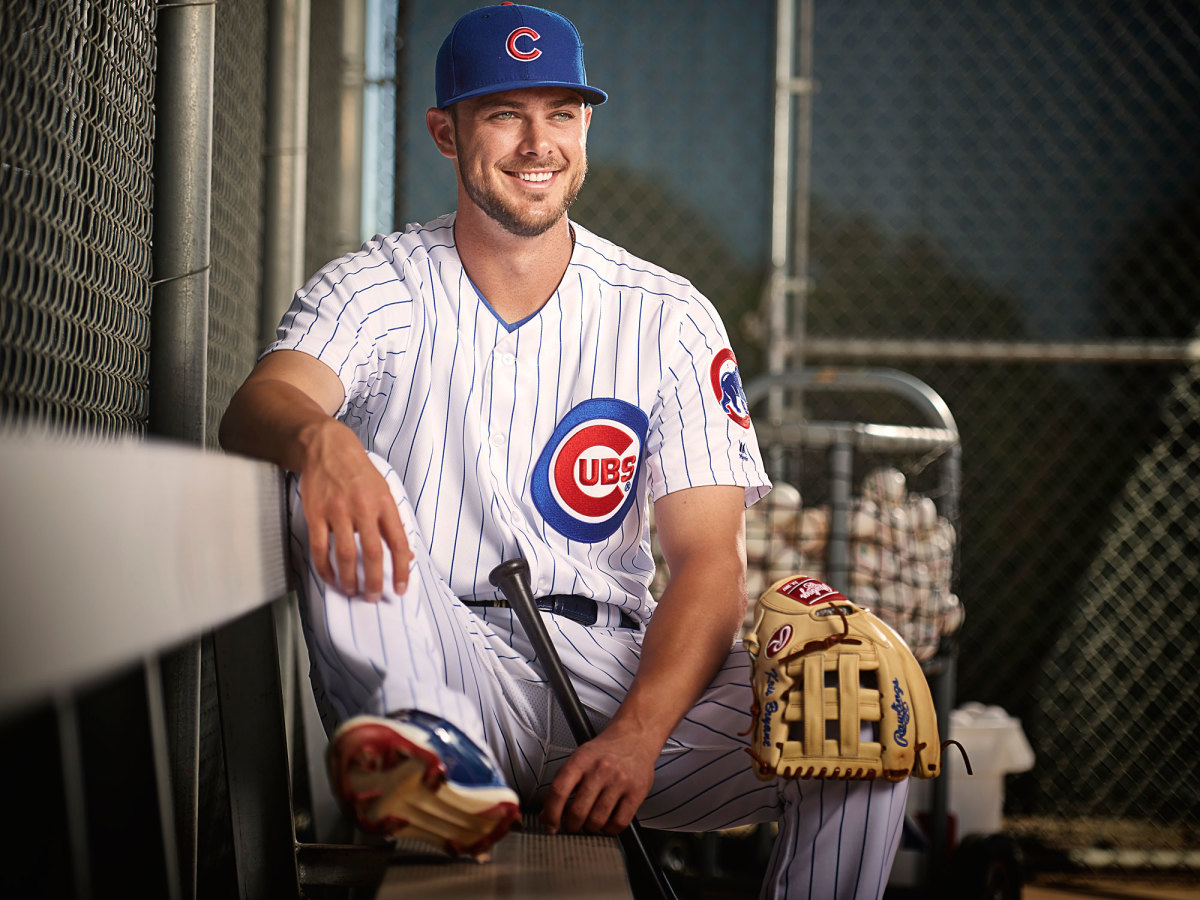
The boy knew what time it was when sunset fell over Las Vegas: It was time to hit. It started when Kris was five. He’d grab his bat and wait in a doorway of the garage, which led to the outdoor batting cage where Mike Bryant gave hitting lessons to local kids all day in the 100-degree Vegas heat. The last lesson ended around sunset. His father would peek toward the door and see his boy there, ready for his turn in The Cage.
A batting cage is an inelegant keeper of dreams, a metal-and-mesh repository of hope. This one became so threadbare from use that balls Kris hit sometimes would fly through holes and skitter across the street into neighbors’ yards. With enough diligence and the right instruction in the cage, we believe the secrets of the hardest thing to do in sports—hit a baseball—might begin to reveal themselves. And sometimes, what goes into the cage has as much meaning as what comes out. Such was the case for Mike Bryant, who built The Cage so that his sons, Kris and Nick, would not be like him.
“A walking Shakespearean tragedy” is how Mike described his younger, baseball-playing self. Mike Bryant was an outfielder from Acton, Mass., and what scouts refer to as a “toolsy” player. He ran a 6.7 60. He could throw a baseball with one crow hop from the centerfield wall at Fenway Park to home plate on the fly. He hit home runs that measured 500 feet. He was a star at the University of Massachusetts–Lowell, where he set the then-Division II school’s career home run record. The Red Sox selected him in the ninth round of the 1980 draft. They sent the brash kid to Elmira, in the New York–Penn League, where he was introduced to the slider and promptly hit .194.
“I had all the tools and did not have the mental makeup to succeed at that level, to be able to handle the failure. No way,” Mike says.
The next spring Mike reported for spring training in Winter Haven, Fla. One day a coach came up to Mike and two other minor leaguers and said, “Ted wants to work with you guys tomorrow. Be there at 6 a.m.”
Ted meant Ted Williams, the greatest hitter who ever lived, an annual guest hitting instructor in Red Sox camp. Mike set his alarm early. He was at the batting cage at 5:50 a.m., proud to be the first of the minor leaguers to arrive. Ted was there waiting.
“Bryant, you’re late!” Williams bellowed.
“Sir?”
“If you’re not a half hour early, you’re f------ late.”
“Yes, sir.”
Mike was awed by the great Williams, never more so than when Ted talked hitting. Ted drew these word-pictures about angles that challenged everything Mike ever knew. Ted explained that pitchers throw the ball downhill at an angle between six and 10 degrees, and so an upward angle in a hitter’s swing was imperative. To do this, Ted would drop his barrel early and behind him so that it met the baseball on an upward angle that matched the downward angle of the pitch.
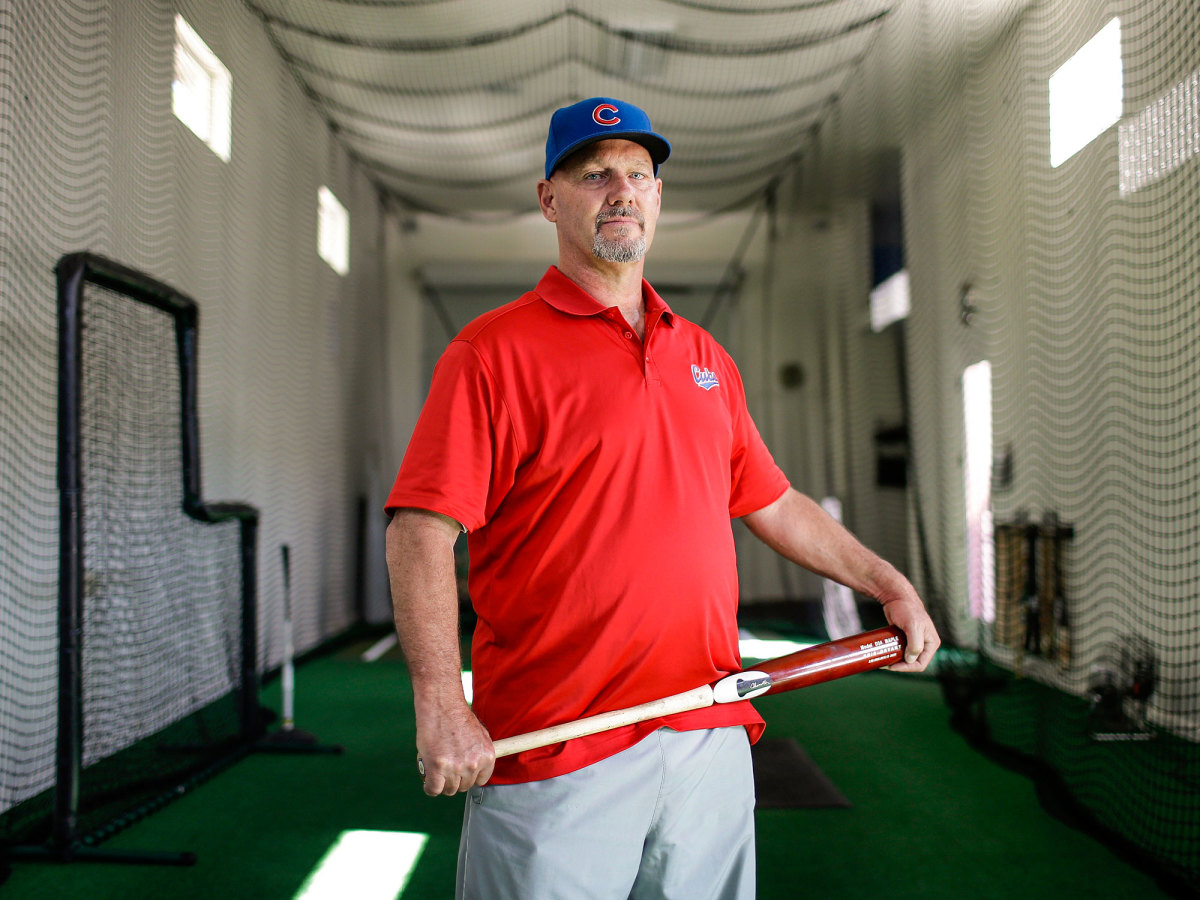
Mike hit .210 that year for Winter Haven in the Class A Florida State League, but the Williams method started to take root. The next spring training, Mike hit over .400. One day, after a game on one of the back fields in which he had two doubles, a single and a fly out to the fence, he was told he was being released.
At 23 years old Mike was out of baseball. He drove to Tampa, picked up Susie and, still in his tank top and flip flops, drove straight home to Massachusetts, where 24 inches of snow and unemployment greeted him. He soon moved to Las Vegas to find work at his father-in-law’s outdoor furniture company, House of Casual Living, a name that quickly became a cruel ironic joke. Mike worked most days from six in the morning to eight at night. He missed many of Kris and Nick’s youth baseball games, until one day, in 2000, when Kris was eight and Nick was 10, he decided he did not want to miss any more. He sold the company, took a job as a chemical sales rep and devoted himself to teaching his boys, and many others, including future Rangers infielder Joey Gallo, about baseball. “I’m going to teach you to hit like Ted Williams,” Mike told Kris around then.
The philosophy hinged on two principles: Hit it hard and hit it in the air.
“He hung on every word,” Mike said.
2017 MLB Trade Value player rankings, Part I: Introduction, honorable mentions, just missed
In the summer before his freshman year of high school, Kris was headed to an American Legion tournament with a teammate and his teammate’s mother when the mother’s daughter called. “Kris is here in the car with us, Jess,” the mom said coyly, loud enough for Kris to hear.
“When they came home,” Jess says, “she said, ‘I don’t think he likes you. I tried to get a read, but he didn’t say anything.’”
Jess would soon learn that being quiet was the norm for Kris. She and Kris wound up in the same English and geometry classes that fall. “She was the more popular one,” he says. “She was class president twice, and senior year she was student body president, so everybody knew her.
“One of my buddies on the team was with one of Jess’s friends, so then we started hanging out together, and it went from there.”
In their Sam Bowie moment of infamy, the Astros took Stanford pitcher Mark Appel with the first pick of the 2013 draft, leaving Kris Bryant, coming off his junior year at the University of San Diego, for the Cubs. With his $6.7 million signing bonus Bryant bought a gift for his father: a state-of-the-art, 65-foot batting cage (it’s actually a well-equipped indoor workout room) with a $3,300 pitching machine. Mike named the new place The Bryant Man Cage. Every winter Mike still throws to him there five days a week. They are surrounded by photos of Kris playing baseball since he was eight. “It’s amazing that in all of them, my swing looks the same,” Kris says. “The only difference is that in college, I spread out my stance more.”
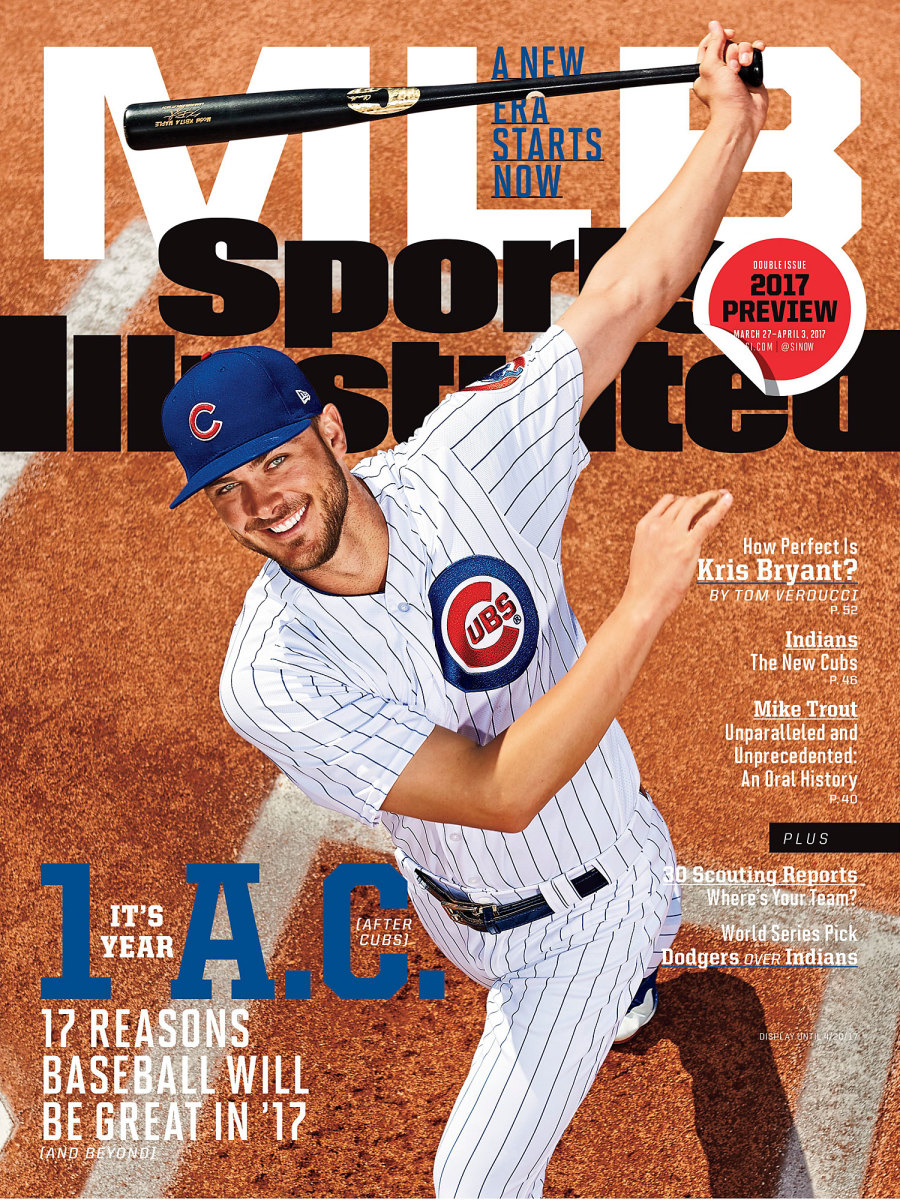
“Kris,” says Cubs hitting coach John Mallee, “has the prototype of the modern swing.” Bryant’s swing is more a marvel of advanced engineering than it is brute force. At 6'5" and 230 pounds he is not especially muscular. His is the Swiss timepiece of swings: a carefully timed chronograph of angles, gears and levers. The first key for Bryant is to get his barrel to enter the hitting zone early. His back elbow stays connected to his rib cage—not getting far from his body—to create a shorter path to the ball. His back foot rolls slightly, which keeps his back hip from firing too soon. Bryant wants his levers to fire sequentially in perfect timing: front hip, hands, back hip and, lastly, bat head, finished off with tremendous extension through the ball with his long arms.
Every time Bryant swings, he tries to hit the bottom third of the ball, the key to creating the backspin that explains why his fly balls carry more than other hitters’. There are two key angles to his swing: the angle at which his barrel drives up at the baseball—the “attack angle,” which typically is 18 degrees for him—and the angle created by the barrel being lower than his hands, or his “vertical bat angle.” As a rookie in 2015, Bryant’s vertical bat angle was 38 degrees. Bryant struck out a league-high 199 times, or 31% of his plate appearances. Mike figured those contact issues resulted from Kris’s bat being too vertical. After that season father and son incorporated a “high-tee drill” in their work. Kris hit fly balls off a tee with the ball placed just above the top of the strike zone on the outer third of the plate, a drill he still uses every day.
“We had to get that to an angle of between 20 and 25 degrees,” Mike said. “The barrel still was below his hands, but we got him to get a little less vertical. His attack angle upward stayed the same.”
Rays' Kevin Kiermaier, trio of Indians highlight preseason All-Underrated team
The result: In 2016, Bryant cut his strikeout percentage from 31 to 22 and improved his two-strike batting average from .151 to .209—while boosting his overall slugging percentage from .488 to .554. The pinnacle of his improvement was Game 7 of the World Series, when in five turns at bat Bryant forced Cleveland pitchers to throw him 34 pitches, 18 of them with two strikes. He won three two-strike battles: with a single, a walk and the fly ball that advanced the go-ahead run into scoring position in the 10th inning.
Kris and Mike last winter identified the key area of improvement for this season: opposite-field hitting. Every time Kris hit off the pitching machine, even on pitches middle and in, he emphasized getting the ball airborne to right centerfield, where he hit most of his home runs in the minor leagues. In 2016, Bryant batted .179 with no home runs on balls hit to the opposite field.
Lawrence, his travel-ball coach as a teenager, has a saying about Kris: His first love is baseball—he fell in love with the game before he noticed girls or met Jess. And Bryant honors his first love with an unrequited quest to be better than he was yesterday.
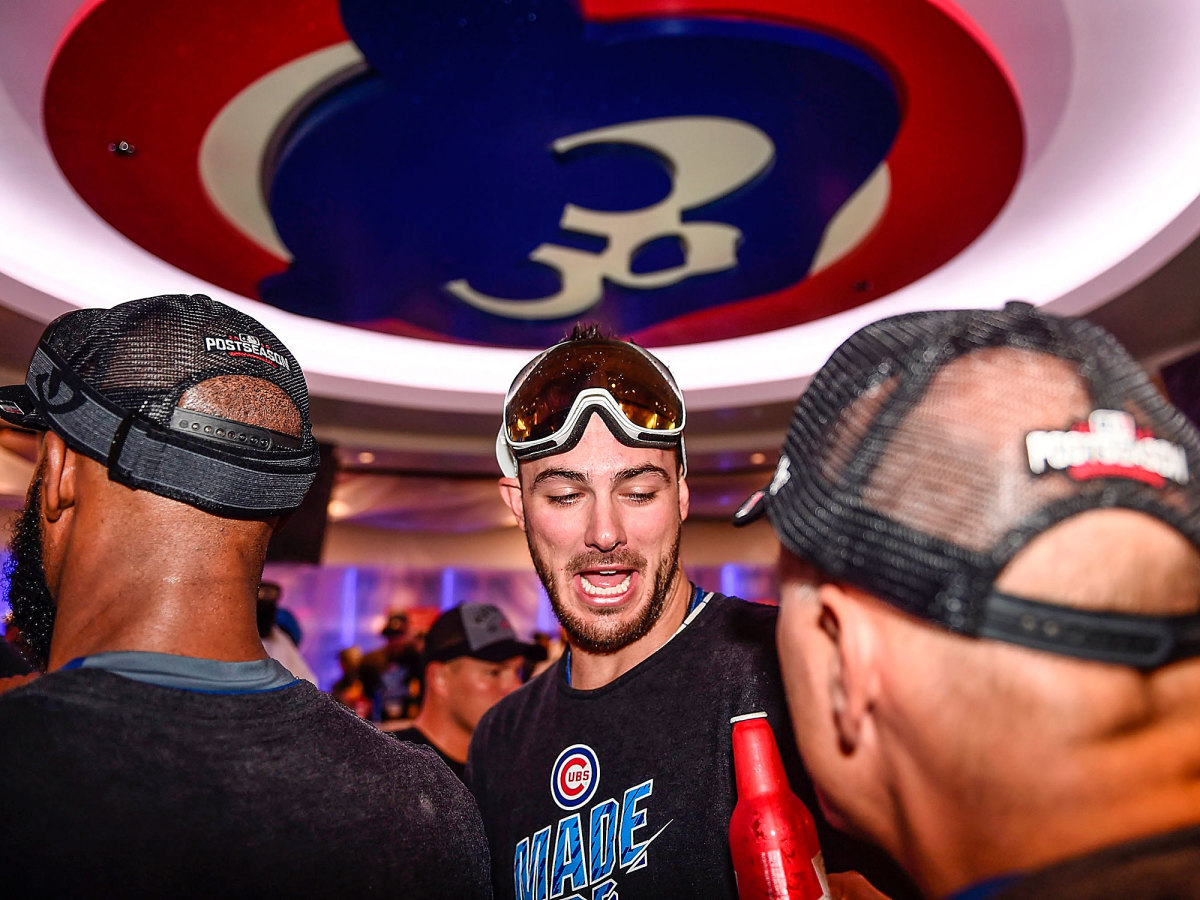
Anthony Rizzo found two flaws in Kris Bryant, and now is the time to reveal them.
“Number one, he wears way too much free stuff,” Rizzo says. “Number two, we need to get him out more. Seriously, he’s a homebody.”
“Guilty,” Bryant says. “Jess and I put on the TV, watch Netflix, order in food and try to be as normal as we can be. We’ve always done that, but now more so because in Chicago you’re going to get recognized. I love the fans, I love everything about them, but sometimes it’s nice to turn that baseball switch off and just try to be a normal person. After a game, I try to stay up an extra three or four hours so I get that extra time to decompress and watch my TV and eat my Cold Stone ice cream.”
Says Jess, “We’ll be out and people come up to him at the grocery store, and that can be frustrating if you’re in a hurry. But he says, ‘You know what? I want them to see my personality, that I’m a nice guy. I think that’s all good Karma, and it comes back to you. Treat people with kindness, and it all comes back.’”
One day in 2015, as Kris made it to the majors, doctors found a tumor in Lawrence’s kidney. It was cancerous. The kidney was removed, and doctors told Lawrence they were reasonably confident that the cancer had not metastasized. “Going through my recovery,” Lawrence says, “one of my motivations to get therapy done and be weaned off medication was Kris. It was his first year in the big leagues, and I wanted to see him play every day.”
A day in the life: Behind the scenes with Dodgers manager Dave Roberts
Last year Lawrence, who now lives in Los Angeles, was thrilled to see Kris during All-Star week in San Diego. Before the game, Mike told Kris that American League starting pitcher Chris Sale was going to attack him with a fastball down and in with the first pitch. “Sit on that pitch and hit the piss out of it,” Mike said.
Bryant had struck out in all six previous at-bats against Sale. The lefthander threw a first-pitch fastball, and Bryant whistled it out of the park. Mike whooped so long and loud in his seat in the lower concourse that someone near him said, “You must be his father.”
“Kris had great role models,” Lawrence says. “Mike is a great father, and Kris has his mother’s disposition. Susie’s demeanor is very even-keeled. He truly has some of the best traits of both parents.”
Just when his Cubs began their playoff run last year, Lawrence received more bad news. The cancer he thought was gone had returned, this time in a lump in one of his lungs. Doctors scheduled another surgery. They advised him not to attend the National League Championship Series at Dodger Stadium, where the Cubs would be playing Los Angeles. Mike and Kris found out about his condition and invited him to spend time with them at the team’s hotel.
A year and a half after the removal of his kidney, Lawrence had part of his lung removed. Again he found inspiration for his recovery from Kris. He was invited to Kris and Jess’s wedding on Jan. 7 in Las Vegas. He wouldn’t miss it for the world.
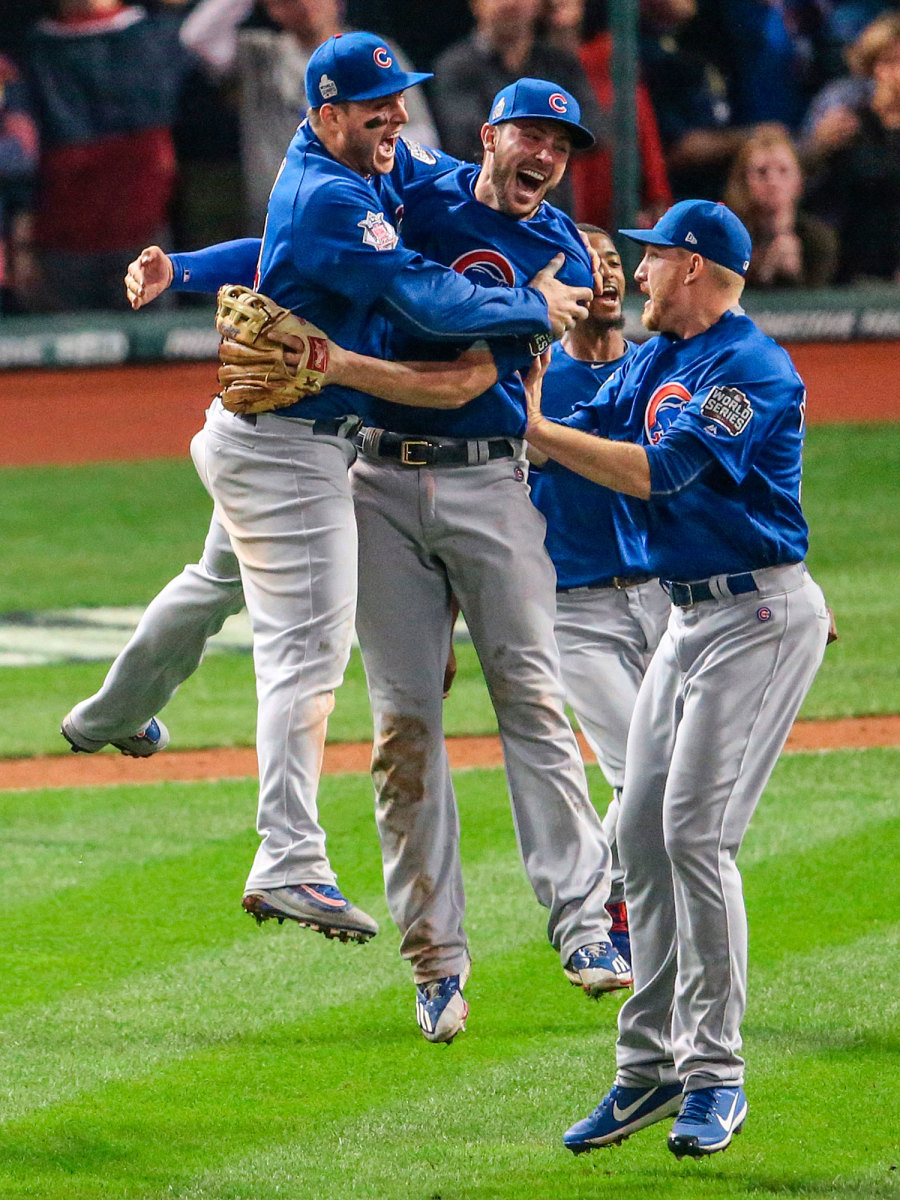
On the night of Nov. 2, 2016, Lawrence watched on a television set in his backyard as Kris fielded a ball hit by Michael Martínez of the Indians with two outs in the bottom of the 10th inning of Game 7. Bryant wore number 17, the same number Mike wore and the same number Nick wore, and the same number of minutes in the most famous rain delay in World Series history that night. Despite one last tempting of 108 years’ worth of fate—his left spike slipped just as his arm came around—Bryant threw to Rizzo at first base for the final out of a moment Lawrence feared he would never live to see. Lawrence stared at the TV in disbelief.
The next morning he was listening to a World Series report on the car radio. That’s when it hit him. It happened. It really did happen. Alone in his car, he welled up in tears. “Baseball was the first love of my life—and the Cubs were that first love,” Lawrence says. “So this whole experience would have been amazing anyway. But to have someone like Kris be a part of it ... well, it’s pretty indescribable how it felt.”
When the Cubs finally reached the land of milk and honey, they turned it into a raging river of champagne and beer. This was the night Bryant promised he would join them in the bacchanalia. “His parents never really drank,” Jess says about his sobriety, “and when I asked him once about it, he said, ‘I have no interest.’”
As for the truth of what really happened that night after Game 7, let Bryant explain:
“We win the World Series and...” he says, pausing for effect, “I still didn’t do it. I didn’t keep up my end of the bargain.
“It was such a big moment, but I just felt like I don’t need to change who I am. I was the same person that got me to this point, so why do I have to be a different person after that? It just didn’t make sense to me.”
If The Cage was the best place to begin this true story, the wet clubhouse on the night of Game 7 is the best place to end it. The Cubs’ wait took so long that in geochronology terms, it feels like the turning of an epoch in baseball, Pleistocene to Holocene. On this side, the Cubs are not only winners, they are also the hottest commodity in baseball, which means the sirens of celebrity call to them. Even Bryant admits, “I feel like where we’re at with this team right now, I have to have my dad’s personality a little bit—be a little more outgoing, more talkative. But if I had a choice, I wouldn’t say much. That’s my mom: Only say something when it needs to be said.”
On this side of history, the future of baseball goes through Chicago, and specifically through its crown prince. It sounds as equal a burden as an honor. But ask yourself this: If Mike and Susie’s kid didn’t change the night the Cubs won the World Series, why is he going to change now?
“I’m not,” Bryant said. “I don’t care to be any different. I have my corner and my comfort zone that I stick to. It’s always been that way and always will.”
